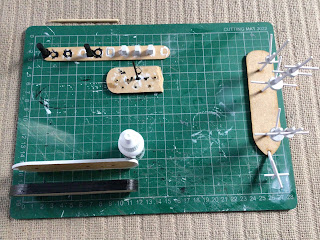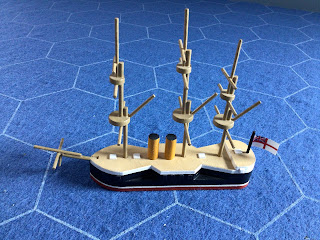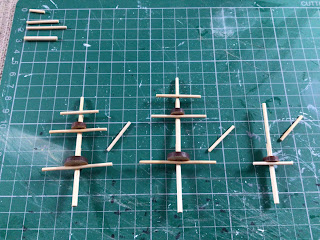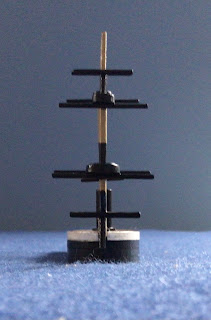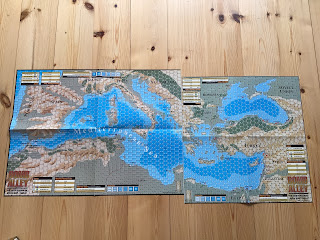This is a long running and continuing journey around a collection of ideas, projects, games, models and a variety of wargaming related themes from my own imagination and from others. As I have been described as having the attention span of a forgetful goldfish you can rest assured the resulting subject matter will be diverse and (usually) entertaining! "He lived in a frenzy of enthusiasm — but nothing lasted for long with him".
Thursday, 31 October 2024
Building a Steam and Sail Warship….Part 3
Wednesday, 30 October 2024
‘Der Tag’ - WW1 In the North Sea (and the Baltic)
Friday, 25 October 2024
Building a Steam and Sail Warship….Part 2
Thursday, 24 October 2024
Building a Steam and Sail Warship….Part 1
Wednesday, 23 October 2024
Few Tears Before the Mast...Part 3
HMS Superb - the largest model I have built thus far and with the largest set of masts and spars. For this model the spars were fashioned from 2mm dowel rod rather than cocktail sticks and yes, I need to get some more of this!
Now that all of the pieces are in place we can look to the final stage of the assembly - the glueing.
If the second part of the construction needed a tidy approach then the final stage needs something else - patience! This is where a good quality adhesive is essential - my preferred choice is super glue - and the aforementioned patience.
This stage is actually pretty straightforward but you cannot rush it - I learned this the hard way - and I always make sure that I have one of my 'top deck' hull templates to hand to use as a jig whilst the glue is hardening off.
The first step is to, well, step the masts and for this you need to mark off what will be the overlaps.
I would love to say that this particular build went smoothly but I did experience a few issues - mainly because it has been a while since I last made any masts and I was a little out of practice - although nothing catastrophic! In truth it has been a good workout for my modelling ‘eye’ so to speak. As every ship in the new ironclad build have masts it was as well I ironed out the wrinkles beforehand!
The paint scheme for the masts will follow that of the completed model above and luckily history helps us out here - black for spars and ironwork was common although how extensive and for how long I am not sure about. Anyway, it looks good and the black covers a multitude of excessive glue-induced traumas!
I hope these three posts have been useful - it was not a subject that could be rushed - and once again I would like to thank John Armatys for giving me the nudge to do this!
Tuesday, 22 October 2024
Few Tears Before the Mast….Part 2
Monday, 21 October 2024
Few Tears Before the Mast….Part 1
A Confederate commerce raiding sloop. I have a pair of these but have on the modelling tray a further example to build which will be virtually the same as the above except having two funnels. This will be the C.S.S. Florida. The pictures show the completed masts and spars etc whilst part two of this post will show the actual construction.
A chance comment from the renowned gamer and all round gentleman, John Armatys, whilst I was busy liberating Arnhem at The Other Partizan has been directly responsible for this post! The subject is masts - or rather how I make them for my models. It is hugely relevant at present for me as I shall be undertaking the building of a veritable forest of the things for the ironclads required for the Anglo Turkish War of 1880. Whilst waiting for the industrial quantities of MDF to arrive from Warbases to build the new collection I realised that I still had another ACW sloop to build so I decided that sharing this element of the build would be useful for readers that may want to have a go themselves.
Building a Mast
Using this building technique is pretty straightforward but one does need to be both careful and methodical. The following are some further views of the above model showing the masts and spars to better effect.
Sunday, 20 October 2024
Beyond Steamer Wars
Saturday, 19 October 2024
More on the Mediterranean in WW2
The Mediterranean naval library.
Following on from my previous post and in the interests of completeness I thought it would be useful to show the modest selection of books in my WW2 naval library for the Mediterranean. Aside from a copy of the 1922 to 1946 Conways Fighting Ships I also own the above.
More than enough to be going on with for my needs methinks….

